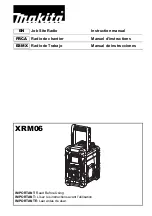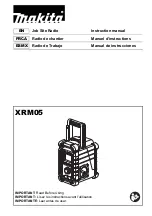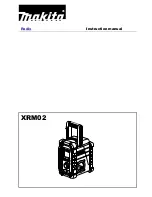
4-19
Operation with a Full Function Handset
Operation When the Signal is Lost or Becomes Invalid
If positional data that was previously detected becomes invalid or is no
longer detected, the radio monitors the NMEA line for 1 minute for it to be
restored.
If a signal is restored on the NMEA line and the radio determines the data
is valid, the data is input, the NMEA indicator remains illuminated, and the
radio re-enters normal operation mode.
However, if no signal is detected, the NMEA indicator flashes and a 5-
second-long staccato alert tone is emitted. The last received positional
data is retained in memory and can be viewed in the NAVSTAT screen. The
message NO GPS appears in NAVSTAT in the position where the type of
device used to be. The NMEA indicator continues to flash until valid
positional data is received. If valid positional data (from the same source)
is later restored, the NMEA indicator is again displayed solid.
Operation When No Signal Detected for 4 Hours
If no valid positional data is received or input manually within 4 hours of
the previous alert, the NMEA indicator continues to flash and the staccato
alert tone is again emitted. This pattern is repeated every 4 hours if no
positional data has been detected. If no manual input was made during the
previous 23.5 hours, all the position fields are set to 9’s and the time and
date fields are set to 8’s.
4.4.16
Digital Selective Calling (DSC)
The Digital Selective Calling (DSC) protocol is a globally applied system
used to send and receive digital Distress calls as well as Individual and All
Ships calls on channel 70, the dedicated DSC channel for Marine VHF. For
a Distress call transmission, your RAY215 takes the position and time
information from the input NMEA data along with your Maritime Mobile
Station Identifier (MMSI) and converts it into a digital “packet”. When
transmitted, this digital information lets other ships and shore stations
know where you are and that you are in a Distress situation.
Communications in DSC mode include the following:
1. Transmitting/Receiving an Individual Call
2. Transmitting/Receiving a Group Call
3. Transmitting/Receiving an All Ships Call
4. Transmitting/Receiving a Distress Call
5. Receiving a Distress Relay Call
Содержание Ray215
Страница 1: ...O w n e r s H a n d b o o k VHF Radio Ray215...
Страница 2: ...RAY215 Modular VHF Radio Owner s Handbook Document number R49013_2 Date March 2002...
Страница 3: ......
Страница 11: ...viii...
Страница 23: ...2 10 Installation...
Страница 109: ...5 6 Maintenance This page intentionally left blank...
Страница 110: ...5 7 Maintenance 5 4 Drawings Assembly Drawing...
Страница 111: ...5 8 Maintenance Block Diagram RF PCB...
Страница 112: ...5 9 Maintenance Control PCB...
Страница 113: ...5 10 Maintenance Front PCB Microphone PCB...
















































